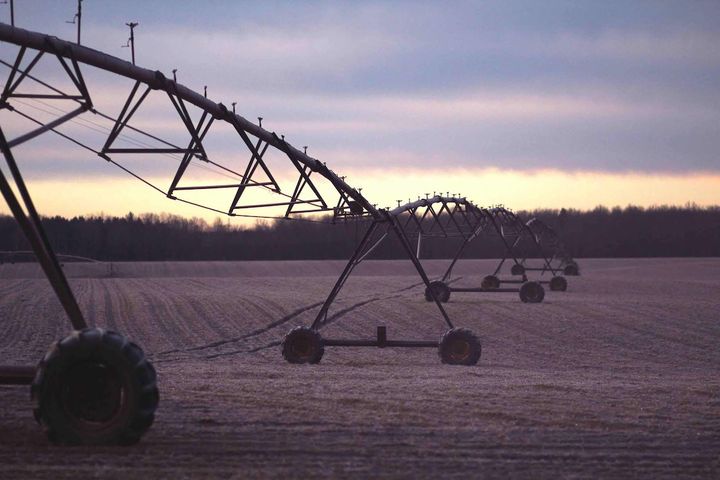AgroTech: Grow more, with less by using IoT

Agriculture is one of the most ancient human practices. By learning to grow plants and domestic species, ancient human societies avoided the necessity to move to find food. Thereby, our ancestors had the opportunity to choose a fixed place to live, establishing towns and more complex societies. Thanks to agriculture, humanity could focus on thinking about other things, like the world around them, giving place to philosophy and science; driving us finally to our present civilization.
Agriculture has been and will be a fundamental activity for human survival and evolution, but agriculture itself has evolved too as humanity has been developing new techniques and technologies. Nowadays, agricultural practices face new challenges that require new and more effective methods.
The most significant challenges could be global warming and overpopulation. Due to overpopulation, agricultural practices must be more productive, in order to cover the growing demand. Nevertheless, global warming is continuously harming crops and livestock, which ruins a big percentage of the yield. Thus, the constant monitoring of the environmental factors, preventive actions and quick reactions to problems become decisive for the success of agricultural practices.
Some of the most common environmental factors that should be monitored and controlled in agricultural practices are humidity, temperature and light. Also, there are frequent activities that should be done, such as irrigation, fertilizing, pest control, and livestock feeding and care. This set of actions can be performed easily in small crops and with few animals. But, what about the extensive fields with thousand animals and a large variety of crops?
Think about how many time is needed by the farmers to cross the extensive fields of each crop, checking the state of a variety of conditions plant by plant and animal by animal. It could become really hard when we talk of hundreds or thousands, implying a lot of farmers, a lot of time, and probably a lot of resources wasted. Wouldn't be great if some kind of technology could make all these things automatically, with high efficiency, saving money and time? Well, we have good news for you: that's possible thanks to the Internet of Things.
Most of the crops need special and controlled environmental conditions to grow, in order to guarantee the production quantity and quality. The IoT enables farmers to monitor in real time and remotely the crops, knowing the state and value of determinant parameters to crop's health, such as temperature or soil moisture. The monitoring is possible thanks to simple and handy devices that can be installed all along the crops. These devices collect information of the desired parameters, through a variety of sensors, and send it to the cloud to be stored, visualized and analyzed with help of the IoT platforms.
In addition to monitoring, the IoT systems allow alerts configuration, which means farmers don't need to be all the time checking the data: they will be alerted immediately when a problem happens. In consequence, preventive and corrective actions can be applied opportunely avoiding losses in the production. If a more complex solution is required, farmers can automate actions with the IoT systems help, depending on established custom conditions based on the parameters' behavior. For example, based on the soil moisture, a farmer can know when exactly the crop should be irrigated. According to these values, the irrigation could be configured to be done automatically just when is needed.
Someone must be thinking: but, why not simply program a day and a time for crops irrigation? The environmental conditions, like weather, change the irrigation needs: more water on dry and warm months, less water on rainy months. By analyzing sensors' data like soil moisture or temperature, the irrigation could become more efficient and accurate: the amount needed at the proper time, reducing enormously the resources waste.
Some of the most common applications of IoT in agriculture include:
- Monitoring of livestock health.
- Monitoring of livestock location.
- Automated irrigation.
- Smart greenhouses.
- Pest control with drones.
- Monitoring of climate conditions (precipitation, humidity, temperature, etc.)
By analyzing the information collected by the IoT systems is possible to develop more efficient and intelligent agricultural practices to increase production and, in consequence, save money and time. The IoT offers a big variety of solutions for agriculture, helping farmers to have all under control no matter how large their farm is.


